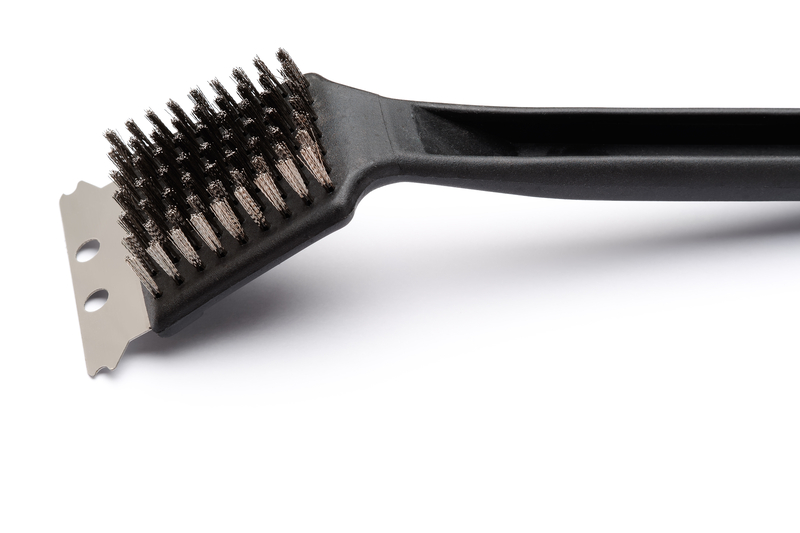Transform Your Window Sills by Cleaning Mould Effectively
Posted on 23/08/2025
Transform Your Window Sills by Cleaning Mould Effectively
Mould on window sills is not only unsightly but may also lead to health concerns and damage to your property. If you've noticed spots of black, green, or white growth around your window frames, it's time to tackle the problem head-on. This comprehensive guide reveals how to clean mould off window sills effectively and prevent its return, making your home healthier and more appealing.

Why is Mould Growing on Your Window Sills?
Mould thrives in damp, dark, and poorly ventilated spaces. Window sills are prime locations because condensation from temperature differences and moisture in the air often accumulate there. Left untreated, even small patches of mould can spread, causing stains, structural damage, and potential health risks.
Common Causes of Mould on Window Sills
- Condensation from fluctuating indoor and outdoor temperatures
- Poor ventilation in rooms such as bathrooms and kitchens
- Leaky windows or seals allowing water ingress
- High indoor humidity
- Neglected cleaning and maintenance
Understanding these causes is vital in preventing the recurrence of mould on window sills.
Dangers of Leaving Mould on Window Sills Untreated
The presence of mould on your window ledges, frames, or sills is more than just an eyesore. Here's why you should act swiftly:
- Health Risks: Mould spores can induce allergies, respiratory issues, and aggravate asthma, particularly in children, the elderly, and those with compromised immunity.
- Structural Damage: Mould gradually degrades paint, wood, and plaster, causing window sills to rot and deteriorate.
- Lowered Home Value: Visible mould can deter buyers and tenants, affecting your property's value.
Addressing mould on window frames and sills not only preserves your home's value but also supports a healthy living environment.
Preparing to Clean Mould Off Window Sills
What You'll Need
- Protective gloves (preferably rubber or latex)
- Face mask (to avoid inhaling spores)
- Safety glasses or goggles
- Cleaning brushes or old toothbrushes
- Microfiber cloths
- Bucket of warm water
- Spray bottle
- Dish soap or mild detergent
- White vinegar
- Bicarbonate of soda (baking soda)
- Hydrogen peroxide (optional for stubborn mould)
- Disposable paper towels
Tip: For persistent or extensive mould coverage, consider consulting a professional mould remediation service to avoid health risks.
How to Clean Mould From Window Sills: Step-by-Step Guide
1. Safety First
- Open the windows while cleaning to increase ventilation and help spores disperse outside, not further into your home.
- Wear gloves, goggles, and a face mask to reduce exposure to mould spores and cleaning agents.
2. Remove Loose Debris
- Wipe away dust, dirt, or loose mould using disposable paper towels. Discard immediately in a sealed plastic bag.
3. Tackling Surface Mould With Soap and Water
- Mix warm water and a few drops of dish soap or a mild detergent in a bucket.
- Dip a microfiber cloth or sponge, wring it out, and gently scrub the affected surface.
- Dry thoroughly afterward with a clean cloth.
4. Using Natural Remedies: White Vinegar and Bicarbonate of Soda
- White vinegar is a natural fungicide. Fill a spray bottle with undiluted vinegar, apply to the affected area, and let sit for at least 1 hour.
- Scrub the mould on window sills with a brush or old toothbrush.
- Sprinkle bicarbonate of soda on stubborn spots and scrub again.
- Wipe clean with a damp cloth.
5. Stubborn Mould? Try Hydrogen Peroxide (Optional)
- Spray a 3% hydrogen peroxide solution onto persistent mould stains on window frames.
- Allow to bubble for 10-15 minutes, then scrub and rinse thoroughly.
Caution: Always test hydrogen peroxide in a small, hidden area. It may bleach or damage certain finishes.
6. Dry the Area Thoroughly
- Mould loves moisture. Use a towel or cloth to dry the sills and windows completely after cleaning.
7. Dispose of Used Materials Safely
- Seal gloves, face masks, and dirty paper towels in a bag before putting them in the bin to prevent spreading spores.
How to Prevent Mould on Window Sills in the Future
Once your window sills are spotless, focus on mould prevention to enjoy lasting results and a sparkling home. Here are effective ways to keep your window areas mould-free:
Boost Ventilation
- Open windows when practical to increase air flow.
- Use extractor fans in kitchens and bathrooms during and after use.
- Keep furniture away from window sills to allow air circulation.
Reduce Indoor Humidity
- Invest in a dehumidifier for rooms prone to dampness.
- Hang laundry outdoors when possible instead of drying on radiators inside.
- Maintain indoor humidity below 60% (ideally 40-50%).
Fix Leaks Promptly
- Check windows, sills, and caulking for cracks or gaps and reseal as needed.
- Repair roof, wall, or plumbing leaks swiftly to prevent moisture intrusion.
Regular Maintenance
- Dust and clean window sills and frames routinely to discourage mould growth.
- Inspect for early signs of mould and address them promptly.
Choose Mould-Resistant Paint
- Consider repainting window sills with mould-inhibiting paint, especially in high-moisture environments.
Natural Alternatives vs. Chemical Cleaners for Mould Removal
Many off-the-shelf cleaners, such as bleach sprays, claim to kill mould. While they may work on non-porous surfaces and remove visible stains, bleach is less effective at eradicating mould roots on wood or porous materials and can sometimes contribute to discolouration or damage.
- Natural remedies (white vinegar, bicarbonate of soda, hydrogen peroxide) often work just as well for minor and surface mould.
- Avoid mixing cleaning agents (e.g., bleach and vinegar), as they may produce toxic fumes.
- For severe or persistent window sill mould problems, professional intervention is safest.
Signs of Serious or Hidden Mould Problems
Sometimes, visible black mould on window sills indicates a more severe hidden problem - especially in older properties or where leaks are involved. Watch for:
- Frequent reappearance of mould despite regular cleaning
- Musty odours near windows
- Bubbling paint or wallpaper, damp stains, or peeling finishes
- Persistent condensation on windows and frames
If you spot these issues, contact a certified mould remediation expert for assessment and professional treatment.
How Regular Cleaning Transforms Your Window Sills
Committed regular cleaning and maintenance will:
- **Restore the original brightness** and appeal of wooden, PVC, or painted window sills
- **Extend the lifespan** of your windows by preventing rot and degradation
- **Create a healthier indoor environment** free of allergens and irritants
- **Improve natural light** entry by eliminating mould that absorbs light and creates shadows
In short, cleaning mould from window sills effectively brings visible and invisible benefits, truly transforming the look, feel, and safety of your living space.

Frequently Asked Questions (FAQs) About Cleaning Mould on Window Sills
Can I use bleach to clean mould on window sills?
While bleach can kill surface mould and remove stains on non-porous surfaces, it is not always effective on wood or painted surfaces. White vinegar or hydrogen peroxide is often safer and more effective for window sills. Always follow up with good ventilation and drying.
Is mould on window sills dangerous?
Prolonged exposure to mould spores can cause allergic reactions, increase asthma symptoms, and negatively affect health. It's best to clean mould promptly and take prevention measures.
How often should I check and clean my window sills?
Monthly inspection is recommended, especially in colder months when condensation is more likely. Clean immediately at first sight of mould on the window ledge or frame.
Can I paint over mouldy window sills?
No. Never paint over mould. Always clean and fully treat the area, ensuring it's dry before applying mould-resistant paint.
Is it possible to permanently prevent mould on window sills?
While it's difficult to guarantee "no mould ever," consistent care, moisture control, and maintenance can keep your window sills mould-free for extended periods.
Summary: Enjoy Brighter, Healthier Windows For Years
Transforming your window sills by cleaning mould effectively is easier than you might think. With a few supplies, the right steps, and ongoing maintenance, you can say goodbye to unsightly and unhealthy window sills for good. Not only does this enhance the beauty of your home, but it also protects your investment and well-being. Take action today, and relish the brightness of clean, pristine windows all year round!
Have you recently cleaned mould from your window sills? Do you have favourite mould-busting tips or questions? Share your experiences in the comments below and join our community of healthy home enthusiasts!





